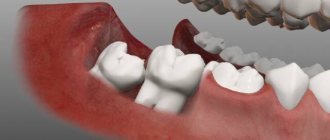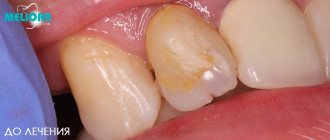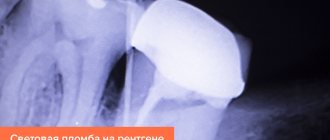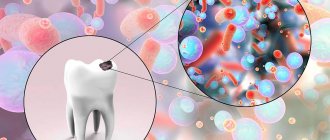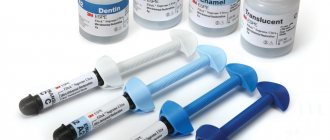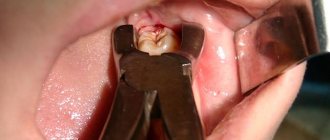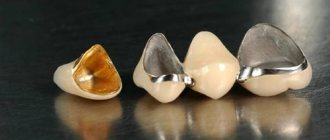Hundreds of pages on the Internet give very “useful” advice on how to get rid of toothache and cure caries with folk remedies. Do you carefully study such pages, memorize all the advice, and also take notes on the particularly tricky ones? When you have a toothache, is it easier for you to read a spell for the waxing moon, kiss a live toad at midnight and rinse your mouth with a decoction of urine from a five-month-old baby, rather than go to the dentist? Then it’s time for you to find out that there is dentistry without pain, that in a modern clinic absolutely painless treatment of caries is possible, and a good doctor will do everything possible to make you feel, if not at home, then at least not like in a torture chamber in the dental chair.
Some people have such a serious fear of dental treatment that they are ready to endure the pain until the last moment, put up with tooth decay and come to the doctor only when the pain is not relieved by any analgesics and because of it the fear is temporarily dulled. Unfortunately, with such a late application, all that remains is to remove the diseased tooth, and the person leaves the clinic happy (he got off easy, he didn’t even have to treat!) and disappears from the dentists’ field of view until the next time - when the next diseased tooth has to be removed. Doctors can tell many stories about relatively young people who were left with practically no teeth, but did not even try to at least replace the lost dental units with a prosthesis, since they could not save theirs. And this is despite the fact that today there are many methods of prosthetics without grinding teeth, which is usually the most feared.
It would be stupid to reproach and shame a person for something for which he is not to blame - after all, none of us fully knows how to control our fears. Therefore, we will neither cause a feeling of guilt nor put pressure on a sense of responsibility. We will simply tell you what methods of painless dental treatment exist today and how you can make up your mind and finally trust the dentist.
Is it painful to treat tooth decay?
Caries does not hurt to treat. All dentist procedures are a little unpleasant, but do not cause severe pain. An adult patient and a small child can tolerate them.
Initial caries
During the stain stage, the focus is on remineralizing the enamel. This procedure is painless and does not require anesthesia. In case of superficial caries, preparation of the affected tooth tissue and application of a filling will be required. Both procedures are performed under local anesthesia.
Average caries
At this stage, removal of the carious cavity and placement of a filling will be required. Before the procedure, local anesthesia is used, due to which there is no pain.
Deep caries
At the stage of deep caries, peripulpal dentin is affected. The affected area is dissected. The healthy part of the tooth is treated with medications and covered with a filling. All procedures are carried out in 1 – 2 visits to the dentist and under local anesthesia. Patients feel discomfort, but there is no severe pain.
Without anesthesia
Modern anesthetics are very effective. But in rare cases, they can cause a violent allergic reaction in the body, so their use should be avoided. Instead, the patient may be offered dental treatment under sedation - light anesthesia. In addition, the part of the tooth affected by caries can be removed with a laser or using chemically active drugs, which also does not cause severe pain.
On the front teeth
Do not be afraid of treating caries in your front teeth. At any stage of the disease, local anesthesia is used. The doctor’s manipulations are careful and do not violate the aesthetics of the dentition.
Cervical caries
The proximity of the soft tissues of the jaw can make the procedure a little more difficult. But even in this case, it is painless, since it is performed exclusively under local anesthesia.
Important! Modern dentistry and its methods make it possible to cure caries in just one or two visits. And the fear that some patients experience before procedures is nothing more than a lack of positive experience of communication and treatment from an experienced doctor. After all, a good specialist will never allow his patient to suffer from pain and suffer in the dental chair.
Pregnancy period
Is it painful to treat a disease without pain relief during pregnancy? The question is very complex. It all depends on the stage of the disease and the patient’s pain threshold. Any stress during this period can negatively affect the condition of the expectant mother, but the disease cannot be left untreated, since it can affect the fetus. Therefore, the best solution is to sanitize the oral cavity before pregnancy. But, if it so happens that the disease began during pregnancy, you should immediately seek help from your attending dentist, and in no case put it off until later. In conclusion, we can say that caries treatment is not a simple and not always pleasant process. And in order to avoid pain during the treatment of this disease, you need to take timely care of the health of your teeth, attend preventive examinations every six months and have your mouth cleaned in the dental office. These measures will allow you to avoid the development of carious formations or identify them at an early stage. At Innovative Dentistry on Marata-31, preventive examinations for our patients are carried out absolutely free!
Why do we feel pain during caries?
Caries is insidious. Starting completely painlessly, it inevitably progresses. Penetrating deeper, it affects and destroys the hard tissues of the tooth, reaching the border of the pulp - loose connective tissue penetrated by blood vessels and nerves. The pulp has very good innervation and reacts to the slightest external stimuli - cold, heat, sour, salty, sweet, etc. And the deeper the caries penetrates, the thinner the border between the affected tissue and the pulp, which immediately reacts to the irritant with severe pain. It can be short-term, constant, throbbing, aching, and eventually become unbearable.
Important! Healthy teeth don't hurt. If you experience symptoms of pain, contact your dentist immediately. Don't expect the pain to go away on its own. You will simply waste precious time, risk your own health and may lose your tooth.
How caries develops
The main reason for the development of caries is dental plaque. At its core, it is a dense matrix consisting of pathogenic bacteria. The active activity of tiny microorganisms leads to changes in the pH level on the enamel surface. The balance changes towards an acidic environment, which is detrimental to enamel. A focus of demineralization appears on its surface - a harbinger of a destructive process.
The rate of development of the disease depends on many factors - diet, level of oral hygiene, and preventive measures. The disease can develop quite slowly - over 3 - 4 years. Or develop quickly - in 6 - 12 months. If there is a large amount of sugar in the diet or the patient does not take good care of his teeth, then the disease can develop at lightning speed - within 2 - 3 months.
Considering the depth of the pathological process, a distinction is made between uncomplicated and complicated caries. The latter is accompanied by the development of pulpitis (inflammation of the pulp) or periodontitis (inflammation of the periodontium).
In the clinical picture of uncomplicated (or simple) caries, four stages are distinguished.
- Spot stage – indicates foci of enamel demineralization. Painless spots can be inconspicuous - white, or noticeable - slightly dark in color. To treat caries, enamel remineralization is carried out at this stage.
- Superficial caries is the stage at which the spot becomes slightly rough, which indicates the initial stage of enamel damage. At this stage, increased tooth sensitivity may appear. When contacting a dentist, the affected area of the tooth is carefully polished, followed by remineralization and a filling.
- Medium caries - the pathological process involves the enamel and the upper layer of dentin. The affected area is clearly visible on the surface of the tooth and can react painfully to irritants. It is dissected, treated with medications and filled.
- Deep caries - the lesion reaches the pulp boundary, which is accompanied by severe pain. To treat the disease, the damaged part of the tooth is removed and treated with medicinal and remineralizing drugs. After this, a filling is placed.
Thus, in the presence of superficial, medium or deep caries, tissue preparation cannot be avoided. The only difference is how deep the tooth will have to be drilled in order to thoroughly remove the affected area. Therefore, it is better not to delay your visit to the doctor. It is much easier to cure caries at an early stage of the disease.
Pain relief methods
Local anesthetics used in modern dentistry are divided into two types - ether and amide drugs.
- Essential drugs:
— Procaine (Novocaine) is the oldest anesthetic (synthesized in 1898) with a wide range of applications, capable of anesthetizing procedures for 30–60 minutes;
— Benzocaine (Anestezin) is a drug discovered in the same 1898, characterized by a short-term effect - up to 20 minutes.
- Amide drugs:
— Lidocaine (Xylocaine) is a more modern drug (invented in 1943), which has a strong anesthetic effect for 75 minutes or more;
— Articaine (Ultracaine) is a very popular drug in modern dentistry, discovered in 1978. It is characterized by a strong analgesic effect and acts immediately after administration for 1 to 5 hours.
When choosing an anesthetic, the patient should take into account the presence of chronic diseases and allergies. For example.
- If you have bronchial asthma or frequent allergy attacks, you should choose medications that do not contain preservatives.
- For diabetes mellitus or thyroid diseases, use medications without vasoconstrictor components.
- For cardiovascular diseases or high blood pressure - drugs with adrenaline (epinephrine).
Important! Before starting treatment, be sure to notify the dentist about the presence of diseases and allergies, so that the specialist has an idea of your health and chooses the right anesthesia.
Will it hurt when injected into the gum?
Very little. You will feel a slight pain when the soft tissue is punctured. To administer the injection, special carpule syringes with the finest needle are used, so the pain is minimal. Prepare for the fact that the drug will be administered for a relatively long time - within 1 minute. Slow administration of the anesthetic is necessary, which makes the procedure painless.
Can anesthesia be used for pregnant women and children?
Can! Modern drugs have an exclusively local effect, which does not extend to the fetus and does not harm the body as a whole. This has been proven by recent studies by European specialists and doctors of the American Dental Association.
Important! You should not delay caries treatment during pregnancy. An affected tooth is a source of serious infection. It can enter the mother's bloodstream and reach the fetus. Its spread can only be stopped by localizing the pathological process and proper treatment.
Application anesthesia
If it is still too scary to perform an injection, then topical anesthesia comes to the rescue. It is aimed at anesthetizing the surface layers of the skin. To do this, use gels, ointments or aerosols with a small concentration of painkillers.
They are applied directly to the places where the injections will later be given, and the patient will not be in pain when the mucous membrane is pierced.
What symptoms should you consult a doctor for?
A visit to the dentist is a mandatory event that should be carried out annually - 1 - 2 times a year. If you notice the following signs, you should contact the clinic immediately.
- The presence of light or dark spots on the surface of the tooth.
- The appearance of sensitivity to cold, hot, sour, sweet, salty.
- Tooth pain when biting food.
- Minor or severe pain in the tooth.
Important! If caries is detected, do not refuse treatment - this risks the development of serious complications and tooth loss. After it is done, try to follow all the dentist’s recommendations.
Wisdom teeth caries
Wisdom teeth susceptible to caries can be treated or simply removed. The appropriateness of treatment depends on a number of factors - the location of the molar, the stage of the pathological process, the structure (features) of the dentition, possible prosthetics, etc. Therefore, before making a decision, it is better to consult your dentist.
Caries of baby teeth
A child’s baby teeth must be treated. You should not think that since they are temporary, then after they fall out and change, the problems will go away on their own. They won't pass! Neglected caries very quickly leads to the development of childhood pulpitis. And premature loss of a baby tooth often provokes the formation of a malocclusion and can harm the normal formation of tooth buds.
Complications caused by caries
Untreated caries is a source of infection and a threat to the entire human body. At the local level (in the oral cavity) it causes the development of the following complications.
- Pulpitis is inflammation of the internal tissue of the tooth.
- Periodontitis is inflammation of the periodontium (the tissue that holds the tooth in the alveolus).
- Phlegmon is a purulent inflammation of soft tissues.
- An abscess is an acute purulent inflammation of soft tissues.
- Tooth loss.
Not to mention the fact that the presence of caries spoils the aesthetics of the dentition and is accompanied by bad breath. This alienates others and makes communication difficult.
Important! Carious lesions tend to grow. If at the initial stage it is one small spot, then over time, darkening and noticeable unattractive lesions will spread to neighboring teeth.
METHOD 4: SANDMAN air-abrasive dental treatment system
The kinematic system for treating teeth using an air-abrasive method with the SANDMAN system is recognized as the best method for treating teeth without drilling .
It is this technique that the specialists of the Bionic Dentis clinic use in their practice.
This method is based on the fact that a stream of air containing particles of aluminum oxide of a certain caliber acts on the tooth. These particles have such an energy of impact on the tooth tissue that it cleans out the tooth tissue affected by the carious process, but does not injure healthy tooth tissue at all.
Another advantage of the air-abrasive method of tooth preparation without drilling is that there is no need to treat the tooth with acid before installing a light filling.
Prevention of caries
Caries is a striking example of the fact that a disease is much easier to prevent than to cure. To prevent its development, you should adhere to the following recommendations.
- Maintain oral hygiene - brush your teeth 2 times a day, morning and evening, rinse your mouth after each meal, remove food residues in the interdental spaces with floss.
- Use prophylactic toothpastes with fluoride.
- Visit the dentist regularly – 2 times a year.
- Do not abuse foods high in sugar.
- If necessary, seal fissures in which persistent plaque quickly accumulates.
- Periodically carry out fluoridation of teeth.
- At least once a year, have your teeth professionally cleaned to help remove dense plaque and tartar.
Examine the surface of your teeth daily. If you notice any suspicious darkening or staining, contact your dentist immediately.
Diagnostics - the first stage of crown installation
Crown installation begins with a high-quality diagnosis and study of all the features of the clinical case. It is extremely important that the diagnosis is carried out by a competent specialist and using modern equipment - for example, computed tomographs, which allow you to accurately see and correctly assess the condition of a person’s oral cavity and choose the optimal prosthetic scheme for a particular patient.
Having assessed the results of the diagnosis and ruled out possible contraindications for prosthetics and installation of crowns, the specialist draws up a treatment plan, which defines all its subsequent stages. The drawn up plan must be agreed upon with the patient!
